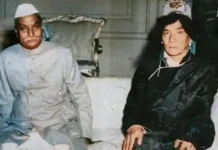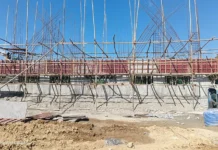[ Asok Pillai ]
It was probably just as well that the press was not invited to the ATAL Conclave organised by the state government at the state convention hall in Itanagar recently – else somebody or the other surely would have asked Jayant Sinha, the union MoS for civil aviation, exactly how he proposed to bring in seaplane and passenger drone services in Arunachal, and when.
It took nearly seven years for the Indian government to go through with the Rafale deal with France – to procure fighter jets for the Indian Air Force, no less – and here we had Sinha, in Arunachal Pradesh, of all places, talking about seaplanes and passenger drones for the state when even the bhoomi pujan for the greenfield airport at Hollongi is yet to be conducted – not to mention that a decade has passed and governments have been toppled and installed before we have even reached the stage of talking about a bhoomi pujan.
Why would seaplanes be required in Arunachal when ordinary airports – as long as they are functional – would do just as well? And why, pray, did Sinha go so far into the future as to assert that Arunachal would be served by passenger drones? Although passenger drones were introduced in 2016 (by China, it bears mentioning), the future of passenger drones – flying taxis, so to speak – is as yet unclear because the technology is so new. Even a country like Switzerland, which is way ahead of India in terms of development, is only now saying it will take part in a feasibility study into using drones for personal transportation on a commercial scale.
It might have been that Sinha was talking about the year 3020, or it may be that somebody in the BJP government is planning to hand over the contract for manufacturing passenger drones to Tripura Chief Minister Biplab Deb, who, as we are aware, is a brilliant scientist who knows more about ancient technology than we mere mortals can presume.
Remember, Sinha announced his sweeping vision to a hall full of young intellectuals. One cannot help but wonder how they reacted to his announcements. It may be that they held their silence out of politeness. Nevertheless, uncomfortable questions were born: Was Sinha’s water bottle spiked? Or was it merely an inadvertent exhibition of the mainlanders’ hubris – the misplaced conviction that you can lay it on thick to the people in the backwoods and automatically be believed? Or, more relevantly, did he try to sell the incredible fancy with the forthcoming elections in mind?
If the last case is true, Sinha will realize in time that the people have the collective experience and wisdom to know by now that promises are one thing and stretching them beyond belief is quite another. The politician in him knows how the rest of the Indian electorate operates, doesn’t he? The same rule applies everywhere. Instead of making highfalutin promises, just show them the money.



